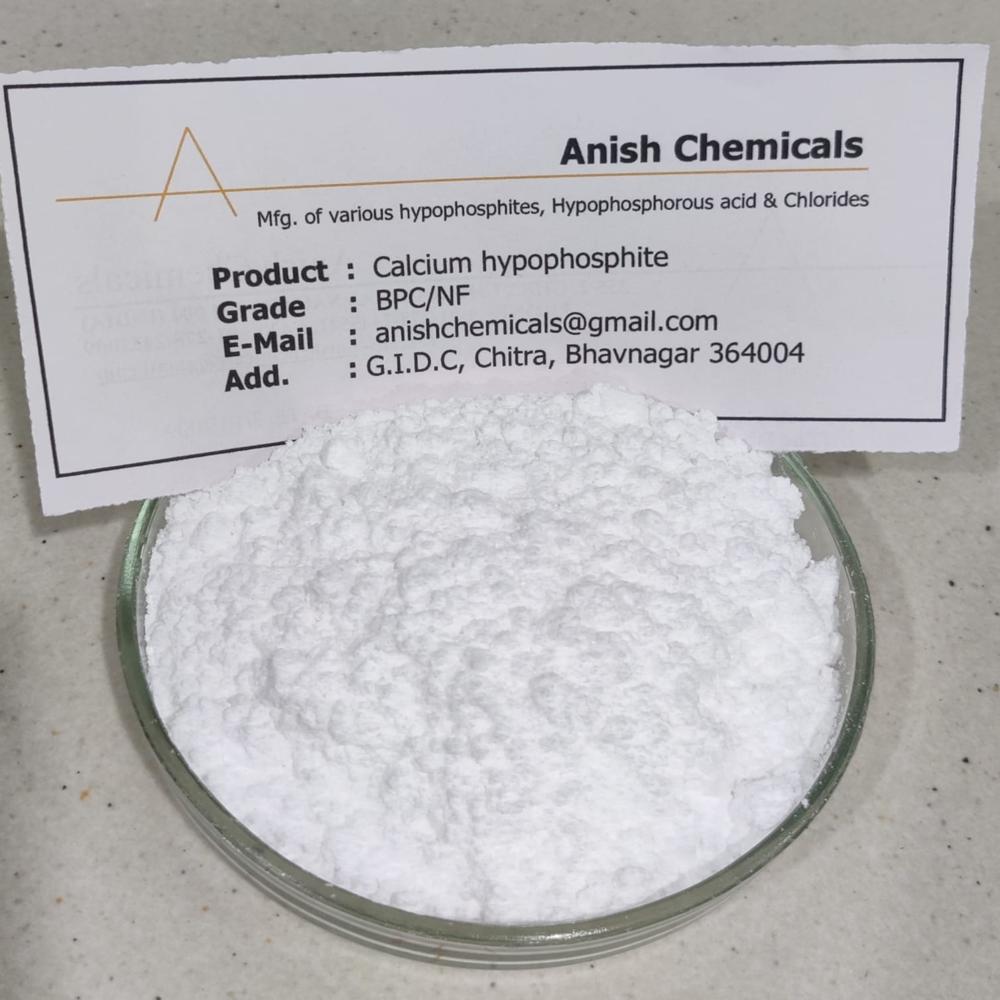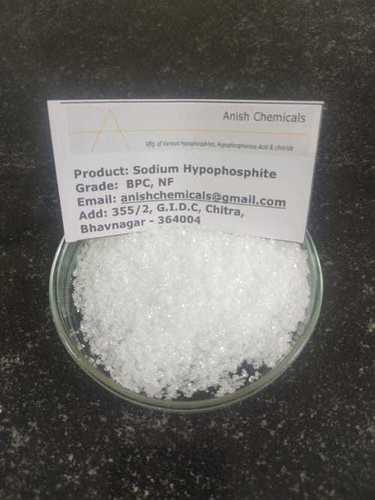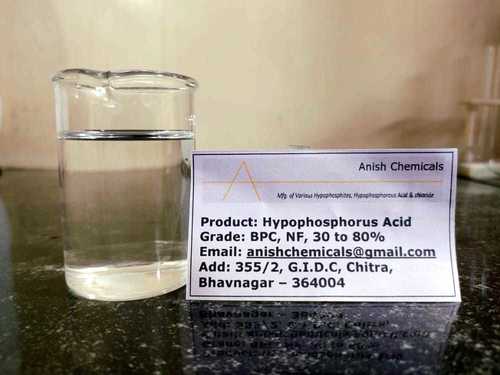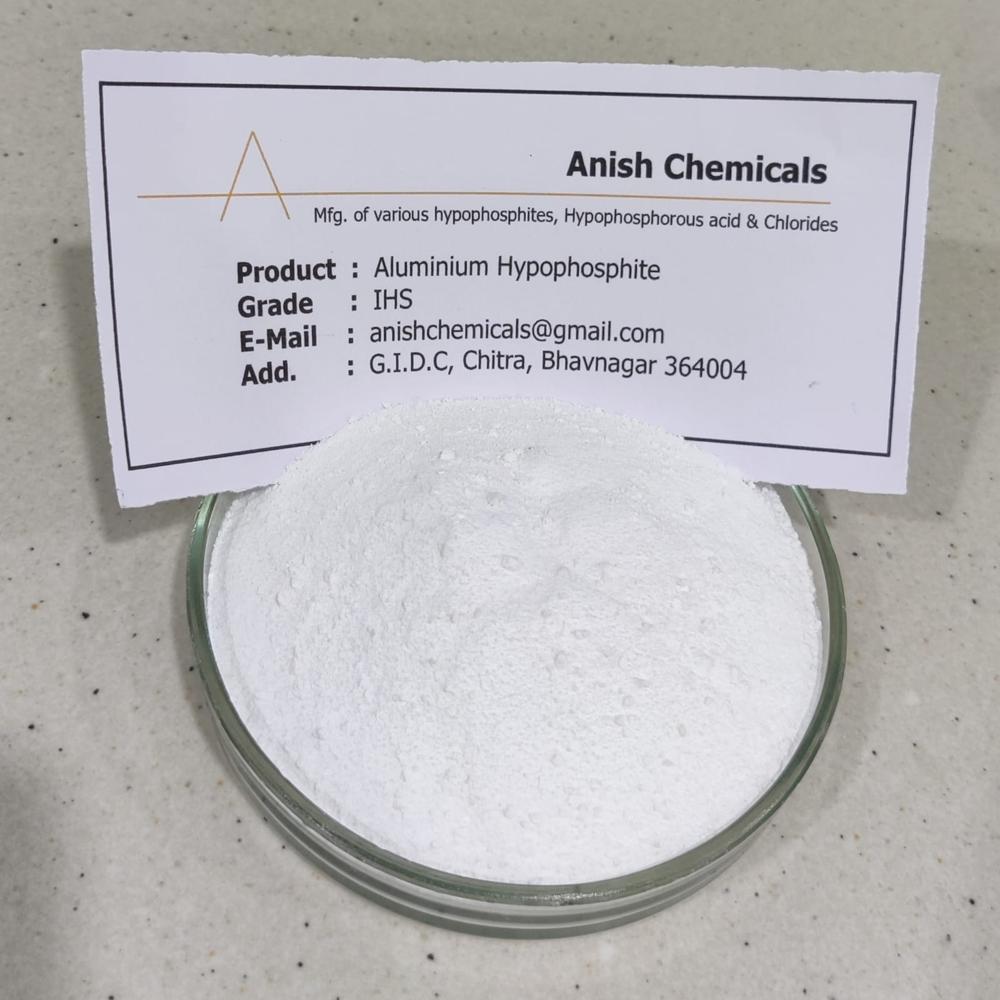
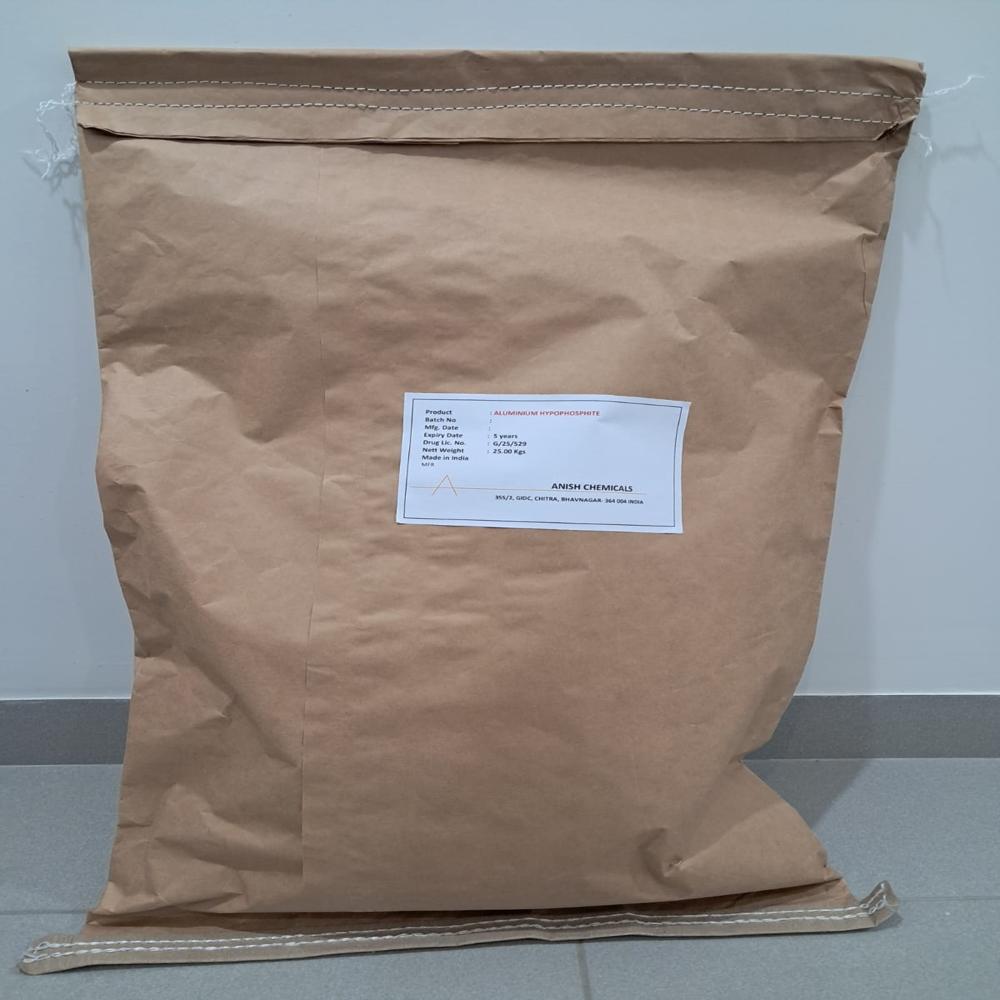
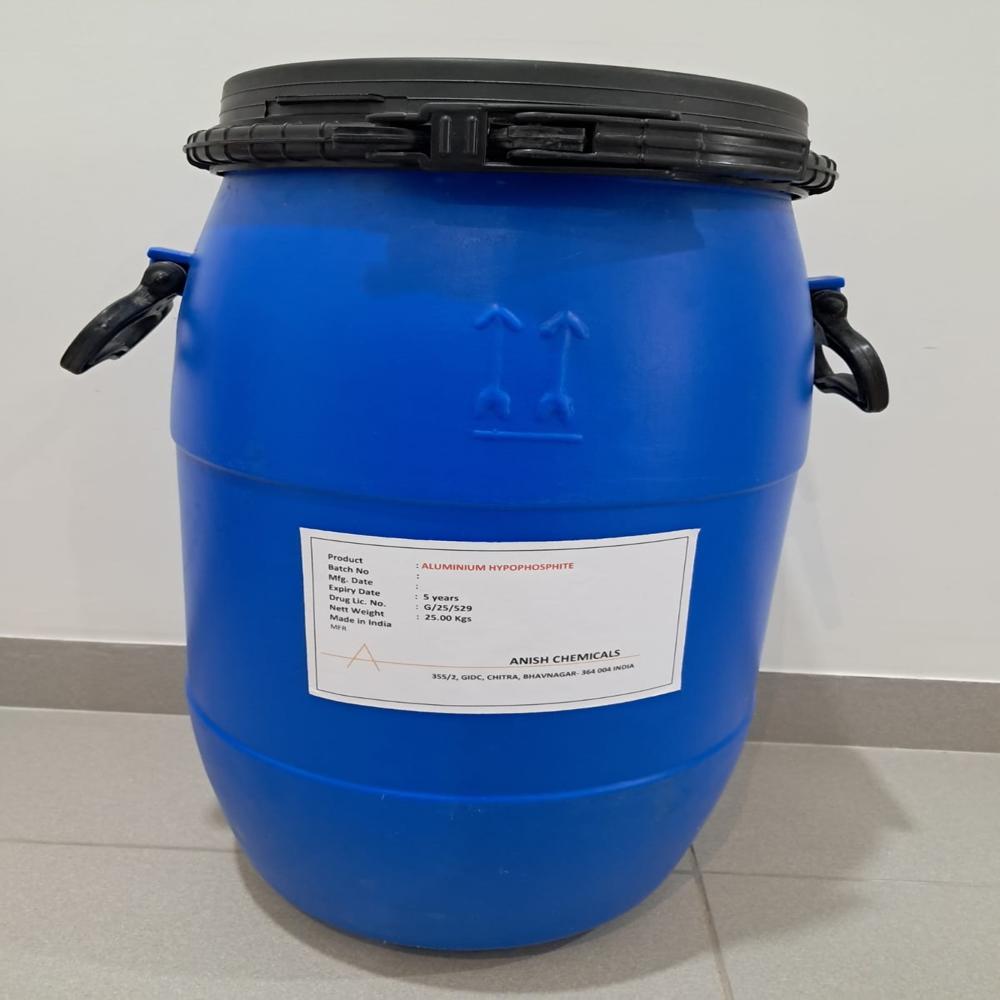
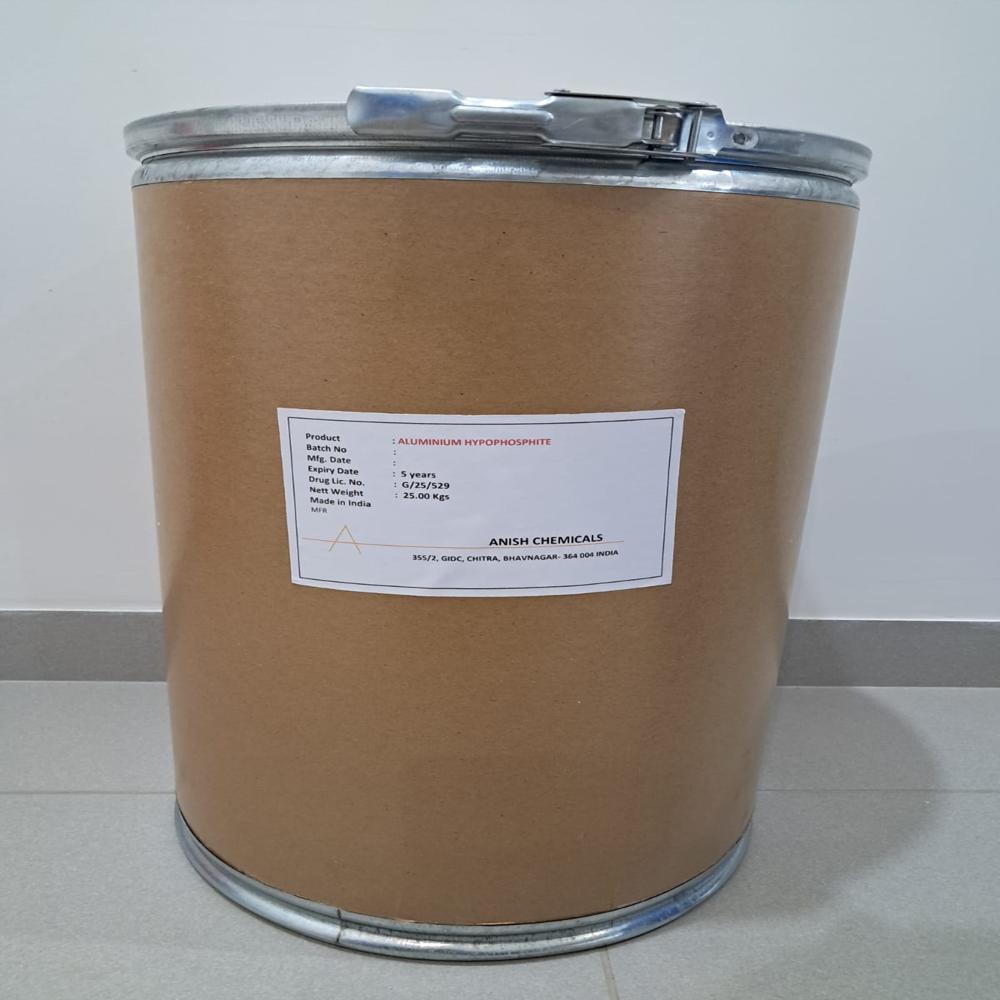

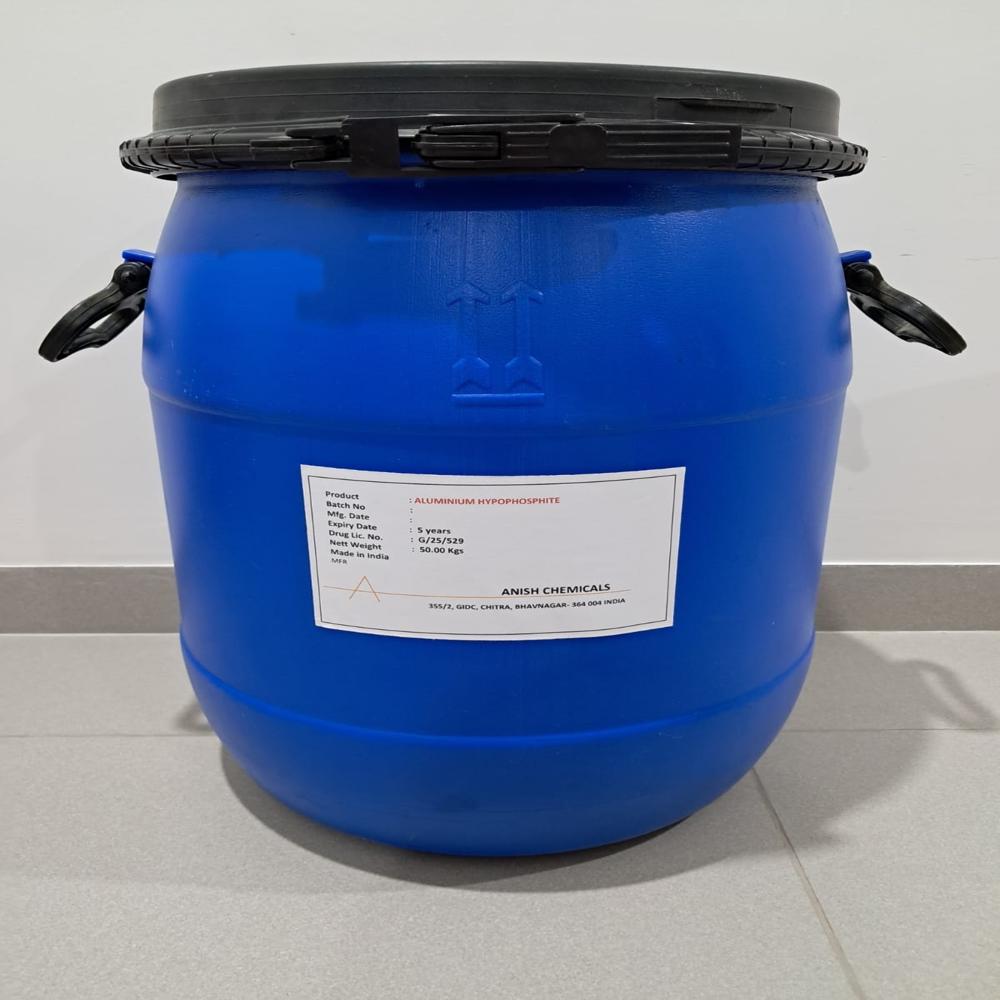
Aluminium Hypophosphite
Product Details:
- Ph Level 3.0 to 5.0
- Molecular Weight approx. 215.89 g/mol Grams (g)
- HS Code 2835 1090
- Melting Point Does not melt
- Water Insoluble water insoluble
- Solubility Insoluble in water, insoluble in alcohol
- Click to view more
Aluminium Hypophosphite Price And Quantity
- 100 kilograms
- 1.0 INR/kilograms
Aluminium Hypophosphite Product Specifications
- Room Temperature
- Insoluble in water, insoluble in alcohol
- approx. 215.89 g/mol Grams (g)
- 2835 1090
- Does not melt
- water insoluble
- White
- 3.0 to 5.0
Aluminium Hypophosphite Trade Information
- Cash Advance (CA)
- Yes
- 25 KG HDPE Woven bags with inner liner LDPE Liner 25 KG HDPE Drum with inner liner LDPE Liner 50 KG HDPE Drum with inner liner LDPE Liner 25 KG Kraft Paper Drum with inner LDPE Liner 50 KG Kraft Paper Drum with inner LDPE Liner 25 KG 3 Ply Paper bag with inner LDPE Liner 25 KG Kraft Paper laminated HDPE Bag with Liner LDPE Liner
- Production certified according to Local GMP, ISO 9001:2015
Product Description
Aluminium hypophosphite uses as below
Applications/uses.
Aluminum Phosphate: Used in some over-the-counter antacids to neutralize stomach acid and as an adjuvant in certain vaccines to boost the immune response.
Sodium Aluminum Phosphate (SALP): A common food additive (E541) used as a leavening agent in baked goods (e.g., cakes, biscuits, pancakes) and as an emulsifier in processed cheese. It is generally recognized as safe (GRAS) by the FDA for these uses.
Engineering plastics: AHP is widely used in plastics such as polyethylene terephthalate (PET), polybutylene terephthalate (PBT), and nylon-6 to make them more flame resistant.
Reduced fire risk: It helps achieve flame retardant grades like UL-94 V-0 in certain composites.
Mechanism: During combustion, it promotes the formation of a strong char layer and can reduce the amount of flammable gases produced.
Synergistic effects: It is often compounded with other flame retardants, such as melamine cyanurate or melamine hydrobromide, to achieve better results in materials like low-smoke halogen-free cables or polypropylene.
Agrochemicals and pesticides: AHP can be used as a stabilizer and activator to control metal ion activity and improve product yield. It can also act as a solubilizer.
Food additives: It has been explored as a pH regulator and chelating agent to prevent oxidation and prolong shelf life. However, other aluminum phosphates, like sodium aluminum phosphate, are more common in food applications like baking powder and cheese.
Water treatment: It has potential applications in water treatment.
Inhibition of dust explosions: Research has shown AHP can mitigate dust explosions, such as those involving aluminum hydride(AIH3) dust, by forming a protective film and inhibiting chain reactions.
Specifications
|
Grade |
IHS |
|
Description |
White crystalline powder |
|
Identification |
It gives reactions of aluminium and hypophosphite test |
|
Solubility |
Insoluble in water and insoluble in alcohol |
|
pH |
3.0 to 5.0 |
|
Calcium |
NMT 1.0 % |
|
Phosphites |
NMT 0.05 % |
|
Loss on drying |
NMT 2 % |
|
Assay |
97.0 % to 101.0 % |

Price:
- 50
- 100
- 200
- 250
- 500
- 1000+







